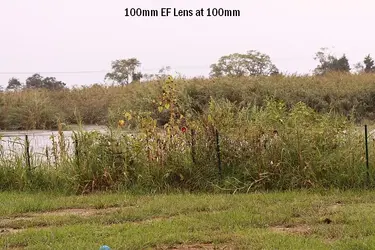...in that respect a 50mm would behave like a 85mm.
I have to respectfully disagree - a 50mm lens mounted on a crop-sensor body is still a 50mm lens. The distance between whatever lens elements and camera body parts are used to measure the focal length is 50mm, not 85mm and not anything else. It does not "behave" like an 85mm lens. What it DOES do, is give you the FIELD OF VIEW that an 85mm lens would give you on a NON-CROPPED sensor. Field of View is not the same as focal length. BRAtkinson's post is entirely accurate.
All this confusion is mainly the manufacturer's fault for not explaining it correctly and clearly in the first place, and making you think that if you buy a crop sensor camera and put a 100mm lens on it, you get a 160mm telephoto instead. Pure marketing BS.
If I take my 100mm EF Canon lens, mount it on my crop sensor 50D, and take a shot, and then mount my 18-135mm EF-
S lens and move the zoom to 100mm and take a shot BOTH SHOTS LOOK EXACTLY ALIKE in terms of their Field of View. The EF-S "crop sensor" lens does not make 100mm look like 160mm. Just look at these two test images which I just took a moment ago. BOTH have exactly the same field of view.
Now, that said, if I take my 100mm EF Lens, and mount it on a 5D, it would have a wider field of view, because of the relationship of the larger sensor to the lens elements. And if I could magically mount my EF-S lens to the 5D, which I can't, and moved the zoom to 100mm ON THAT LENS, it would look as though I had mounted a 160mm lens on my 5D, because of the geometry of the lens elements and 5D sensor size with that particular combination.
The terms "magnification" and "crop factor" should never appear in the same sentence together.



![[No title]](/data/xfmg/thumbnail/41/41759-f0f73c457ebcb6dabcbddc7a3c000487.jpg?1734176065)

![[No title]](/data/xfmg/thumbnail/32/32943-1a3c3a399438cf2fc6a21415e9bdedcf.jpg?1734162774)
![[No title]](/data/xfmg/thumbnail/32/32942-4440dd4ca2ff307a5d19277feedf1d94.jpg?1734162769)

![[No title]](/data/xfmg/thumbnail/32/32945-a29b33c040ad72e4b783ea5e431cec65.jpg?1734162786)
![[No title]](/data/xfmg/thumbnail/32/32946-74023d9d5e025fc03f754a05cb917646.jpg?1734162791)
![[No title]](/data/xfmg/thumbnail/36/36135-6594fe1d58af0053c3e939665e543ce4.jpg?1734168245)



![[No title]](/data/xfmg/thumbnail/40/40296-1e3931509698e96fed6a0e43f5cb4adc.jpg?1734174707)